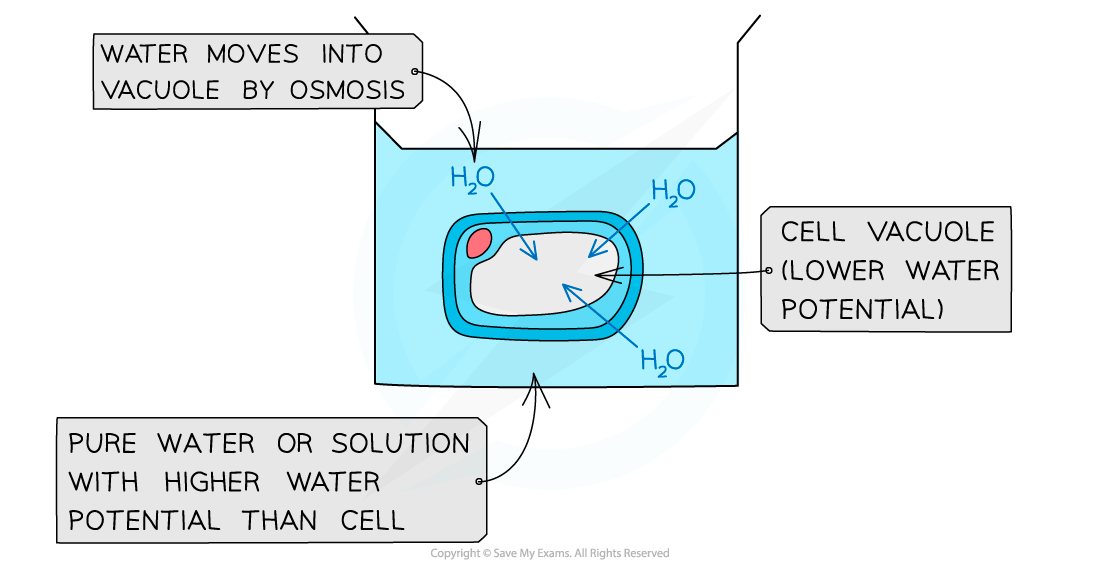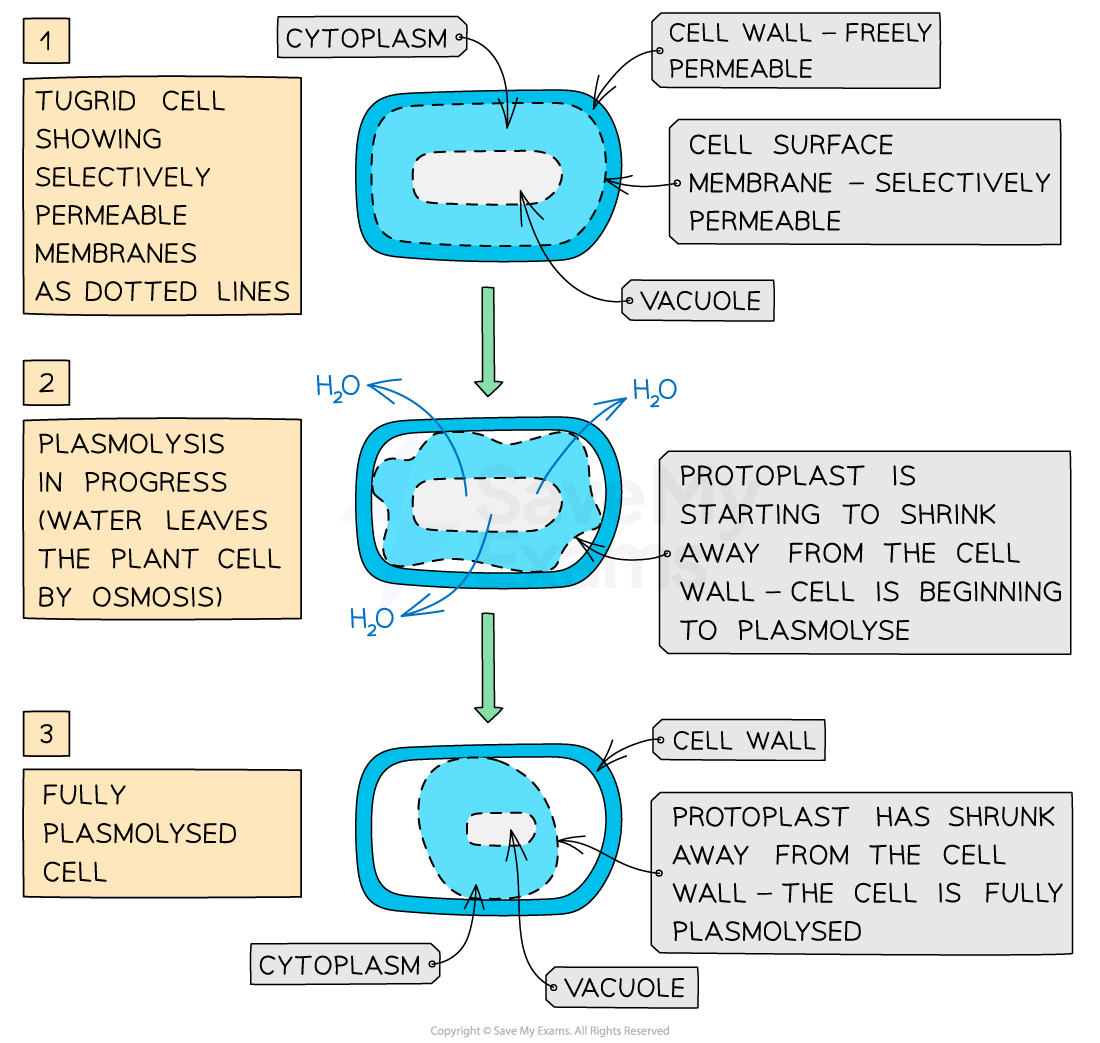Osmosis in Plant Cells (Cambridge (CIE) A Level Biology): Revision Note
Exam code: 9700
Osmosis: plant cells
Osmosis is the net movement of water molecules from a region of higher water potential (dilute solution) to a region of lower water potential (concentrated solution), through a selectively permeable membrane
If a plant cell is placed in pure water or a dilute solution, water will enter the plant cell through its selectively permeable cell surface membrane by osmosis
This is because the pure water or dilute solution has a higher water potential than the plant cell
As water enters the vacuole of the plant cell, the volume of the plant cell increases
The expanding protoplast (living part of the cell inside the cell wall) pushes against the cell wall and pressure builds up inside the cell
The inelastic cell wall prevents the cell from bursting
The pressure created by the cell wall also stops too much water entering and this also helps to prevent the cell from bursting
When a plant cell is fully inflated with water and has become rigid and firm, it is described as fully turgid
This turgidity is important for plants as the effect of all the cells in a plant being firm is to provide support and strength for the plant
This allows the plant to stand upright with its leaves held out to absorb sunlight
If plants do not receive enough water the cells cannot remain rigid and firm (turgid) and the plant wilts

If a plant cell is placed in a solution with a lower water potential than the plant cell (such as a concentrated sucrose solution), water will leave the plant cell through its selectively permeable cell surface membrane by osmosis
As water leaves the vacuole of the plant cell, the volume of the plant cell decreases
The protoplast gradually shrinks and no longer exerts pressure on the cell wall
As the protoplast continues to shrink, it begins to pull away from the cell wall
This process is known as plasmolysis
The plant cell is plasmolysed

Examiner Tips and Tricks
Remember—plant cell membranes are composed of a phospholipid bilayer and are selectively permeable (only certain molecules can cross), whereas plant cell walls are made of cellulose and are freely permeable.

Unlock more, it's free!
Did this page help you?